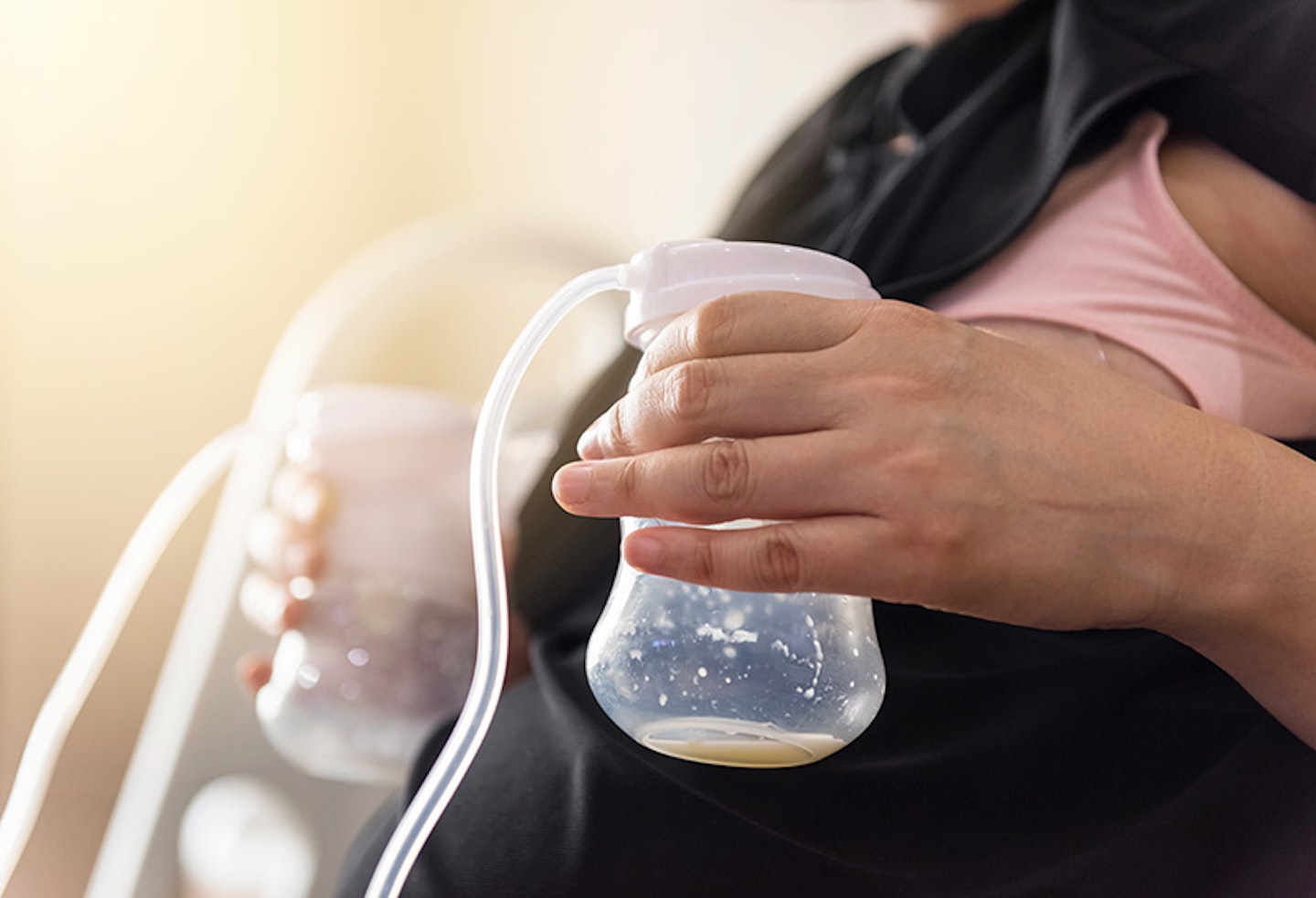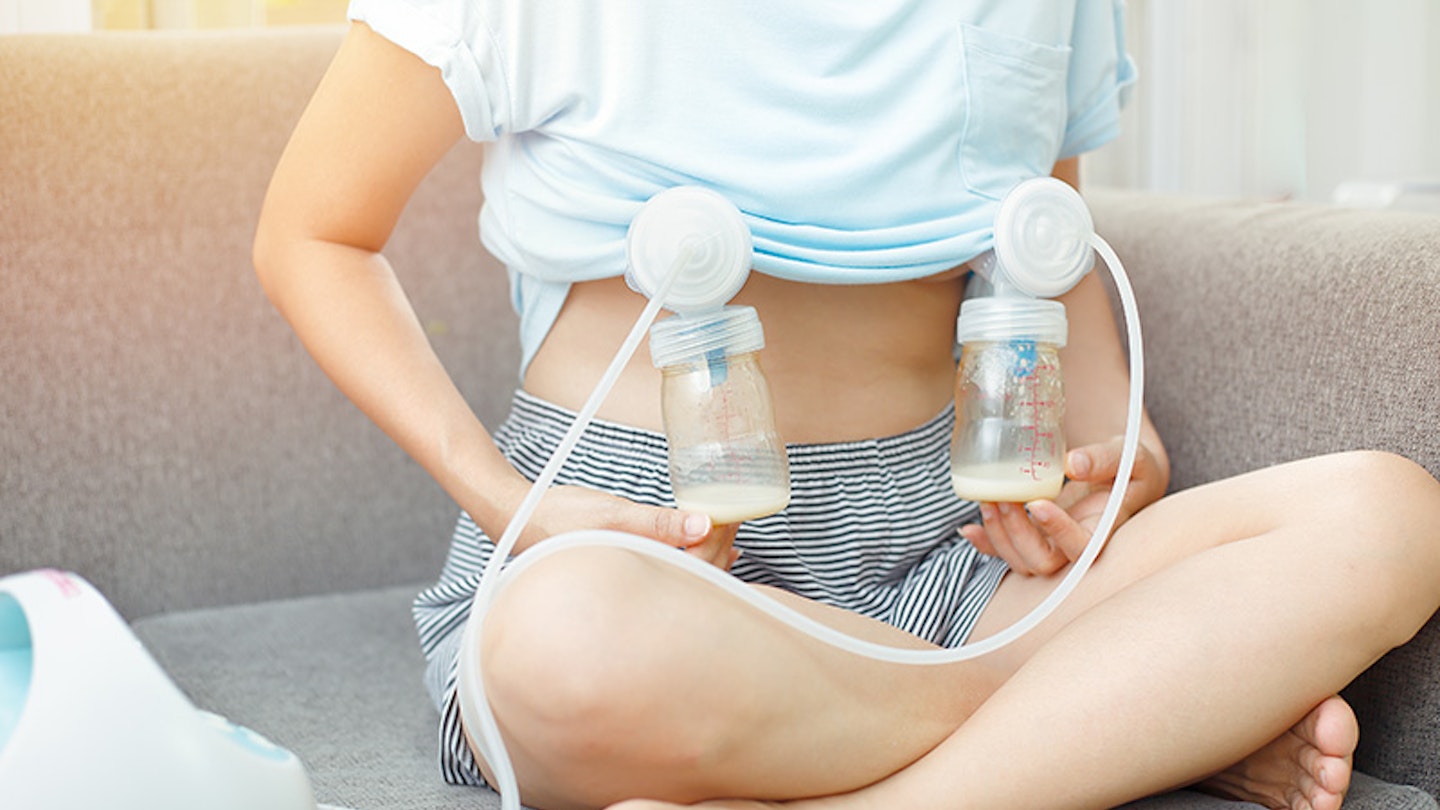Whether using an electric breast pump or a manual breast pump, power pumping can become a big part of feeding your child, especially in the first few months. This can be to support your breastfeeding journey or in order to stop it.
Breastfeeding has both short and long-term health benefits for both mother and child. In the UK almost 3/4 (72 per cent) of all mothers breastfeed their babies for their first feed, however, according to recent research by The Nuffield Trust, this number drops to around 45 per cent at six to eight weeks and mums move on to bottle feeding.
There can be a number of reasons why new mums might decide to move on from breastfeeding, one of which is low milk supply. But a drop in milk supply doesn't have to be the end of your breastfeeding journey when you can increase your milk supply with power pumping.
We caught up with Nannette L. Mills, Lansinoh's clinical advisor and lactation specialist to find out more.
What is power pumping?
Power pumping is basically a manual version of cluster feeding - something babies start to do naturally to stimulate more milk production, and is often done in preparation for a baby growth spurt. Cluster feeding is when your baby feeds more, often every 20 minutes, and even more frequently in between their normal feeding times.
"You're encouraging your body to produce more milk by rapidly emptying the breasts – in a similar style to when baby frequently feeds. Remember this is not meant to replace your normal pumping routine, but rather to increase your milk supply in line with your established routine," says Nannette.
Power pumping is also sometimes referred to as cluster pumping. Using a routine of power pumping sessions with the best breast pump for you encourages your body to produce more breast milk by rapidly emptying the breasts. Think of it as a supply and demand technique - if there's more demand the supply will increase. It is not meant to replace your normal pumping routine, but rather to enhance it by encouraging your body into producing more milk. Power pumping is particularly useful if you're exclusively pumping, as it replicates cluster feeding.

How do you do it?
If you don't already know, you should first learn how to use a breast pump in general. According to Nanette, it's all about dedicating a set amount of time to how often you pump breast milk.
"In order to power pump, find an hour in the day (morning is best as milk supplies are generally higher then) and do three pumps. The first pump should be for 20 minutes with a 10-minute rest, followed by a 10-minute pump with a 10-minute rest. Finally, pump for 10 minutes.
"You should resume breastfeeding as normal, pumping around baby’s feeding schedule i.e. for 15 minutes every three hours.
"When looking for a suitable pump for power pumping – it can be easier to opt for one with hospital strength suction, such as Lansinoh’s Double Electric Breast Pump. This also comes with customisable settings to make your pumping as comfortable as possible."
How often should you power pump to increase milk supply?
There are a few different power pumping patterns you can follow, we've listed a few examples below. Make sure that you free up an hour of your day in which you can pump uninterrupted - perhaps aligning it with your baby's usual nap time, when they're in bed, or when your partner or parent can take over baby duties for a bit. Once a day is plenty, but you can power pump two times a day if it works better for you.
It also gives you a chance for a well-deserved bit of me-time, so set a timer on your phone (to remind you when to rest and when to pump) and catch up on that Netflix show you've been dying to watch, or read a book!
Power pumping chart 1:
Best for those with a hands-free electric pump.
Full time: 1 hour
• Pump for 20 minutes, rest for 10 minutes
• Pump for 10 minutes, rest for 10 minutes
• Pump for 10 minutes.
Power pumping chart 2:
Best for those with a shorter amount of time to power pump.
Full time: 25 minutes
• Pump for 5 minutes, rest for 5 minutes
• Pump for 5 minutes, rest for 5 minutes
• Pump for 5 minutes
Power pumping chart 3:
Power pumping is easiest to do with a hands-free double electric breast pump, but you can do it with a single pump or a manual pump too. If you have a single pump you could always follow the charts above, feeding your baby on the other breast at the same time.

Here's an example of a power pumping schedule for a single pump or a manual pump:
Full time: 1 hour 12 minutes
• Left side – 12 minutes
• Right side – 12 minutes
• Left side – 8 minutes
• Right side – 8 minutes
• Left side – 8 minutes
• Right side – 8 minutes
• Left side – 8 minutes
• Right side – 8 minutes
You can repeat this schedule once or twice daily. Also remember that the pumping times don't have to be exact - just listen to your body and make sure to give your breasts a few breaks rather than pumping continuously for the whole hour.
Throughout the rest of the day, pump the normal length of time when you would typically pump/feed, ideally replicating your baby’s feeding schedule or the usual times that you would be pumping (for example, pump for 15 minutes every 3 hours).

How long does it take for power pumping to work?
Nanette says you can expect power pumping to take anywhere from two-three days to three weeks to truly increase your breastmilk supply, but you should notice a difference after two or three days.
Remain consistent with sticking to a power pumping routine - i.e short bursts, like in the power pumping charts suggested above. If you try to pump consistently for an hour, you're more likely to cause damage than improve your milk supply.
Should I try power pumping?
"If you are concerned about milk supply and want to increase your breastmilk supply then power pumping might be the right choice. Check with a healthcare professional about your supply before trying this." Says Nanette.
When not to power pump
"If your milk supply is already steady enough there is no need to power pump. Also, if your healthcare professional does not recommend power pumping then you should avoid this." Nanette warns.
Before power pumping, consider the possibility that your pump may not be working properly. Is your baby able to get enough milk when feeding, or do they still seem hungry straight after? If your baby seems to still be getting enough milk chances are your pump isn't functioning correctly.
Also talk to your midwife, health visitor or GP before trying power pumping - they'll be able to advise you on your pumping routine and even your technique, which may help baby latch on better.
Women who don’t have a problem with milk supply should not power pump, as this can cause an oversupply of breast milk, breast engorgement and painful swelling that makes it difficult for a baby to breastfeed.
Also avoid power pumping if your baby is already cluster feeding and you're able to breastfeed during those times. This natural process will increase your milk production without power pumping being necessary.
Is power pumping safe?
Nanette says it's all about pumping correctly. "With all pumping, it’s vital to ensure that mums are pumping correctly to avoid any tissue damage or discomfort. Lansinoh’s Live Midwife Chat function allows mums to ask questions to midwives 7 days a week. If you’re uncertain about whether you’re pumping correctly or have any other question related to breastfeeding they are on hand to help!"
About the expert
Nannette L. Mills (RNC, IBCLC) is a Lansinoh clinical advisor. Her particular areas of expertise are NICU; Lactation.
